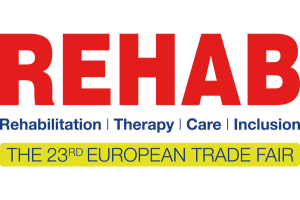Prescription of medical aids by carers - a great opportunity that is still being used far too little
Two years ago, a minor sensation occurred in the German aid reimbursement system: For nursing aids, such as wound dressings and bandages, but also incontinence aids and even shower and adaptive wheelchairs, the prescribing authority of medicine was overturned. The decision as to what is important and necessary for patients in their everyday lives is now in the hands of the people who know these patients personally.
The new regulation in Section 40 of the Social Security Code XI actually only reflects the reality of everyday life, in which carers often ‘request’ prescriptions for the necessary aids from medical specialists. Now a bureaucratic step is being skipped and care is being strengthened.
The legislator wanted people in need of home care to receive suitable aids more quickly than before and is relying on the expertise of trained specialists. If the experts recognise a need for an aid during a home visit, this can be submitted to the funding provider as a specific recommendation by the medical supply retailer instead of a prescription. This saves valuable time in care, e.g. in the case of problems with wound care, where appropriate dressings are needed immediately for prophylaxis to prevent further damage. It also relieves the burden on GP practices and reduces bureaucracy.
At REHAB, visitors can get to know and try out the latest products from the assistive technology sector. Photo: Jürgen Rösner, Messe Karlsruhe
A good measure in times of skills shortages
An important argument, especially in times of a shortage of skilled labour! After all, outpatient care is currently under great pressure, as two generations of people in need of care are coming together for the first time: On the one hand, an increasing number of very elderly people and, of course, the large population of ‘baby boomers’ who are also retired or in the process of retiring.
Everything is well described in the guideline on the recommendation of aids and care aids by care professionals in accordance with Section 40 (6) SGB XI: There is also a list of aids to be prescribed in the appendix. This means that all care professionals with a qualification in accordance with the Nursing Professions Act (PflBG) can make corresponding recommendations; the necessity or need for the provision of the recommended aid or care aid is presumed (so-called presumption effect). The National Association of Statutory Health Insurance Funds has provided a standardised form for this purpose, but the need can also be submitted to the cost bearers ‘simply in text form’, as with a normal prescription. This concerns aids that are missing ‘at home’, not inpatient care.
Sven Kübler, who, together with the Competenz Netzwerk Außerklinische Intensivpflege CNI e.V. and the IPV Intensivpflegeverband Deutschland e.V., is planning a panel discussion on 22 May 2025 at REHAB, sees a milestone in the outpatient care of an increasingly ageing society:
Sven Kübler, CNI e.V.
A major step towards reducing bureaucracy in the provision of medical aids
And there was something else that was unique: at last, the legislator granted trained nursing staff an enormous power of judgement. Normally, medical aid prescriptions by panel doctors can be reviewed by the Medical Service (MD) at any time at the request of the funding organisation. According to the new guideline, medical necessity is assumed to be a given when the specialist makes a recommendation and the MD no longer intervenes. This reduces the legally permitted “processing times” to a maximum of three weeks, which favours quick remedies in acute situations. This is particularly important for the care of children, where development windows close if the authorisation processes take too long.
However, according to the voices from the field after two years, knowledge of this uncomplicated and promising form of prescription has not yet reached carers “on site” across the board. It seems that many carers are unsure of what they are allowed to do and fear recourse claims.
Denise Falkenberg, Head of the Medical Technology Department at Reha-aktiv Chemnitz, herself a specialist nurse for anaesthesia and intensive care medicine, regrets this:
“It's just a shame that most carers are very poorly informed about this. This topic should be made much more visible. We have now printed a brochure, which we provide to the nursing services for complex care. The fact is that more educational work urgently needs to be done here.”
Olivia Ristas from Vitalzentrum Glotz highlights how the new brochure empowers healthcare professionals and streamlines the process of recommending assistive devices. Photo: Olivia Ristas (private)
Practical brochure strengthens carers' skills
Olivia Ristas from the Vitalzentrum Glotz medical supply retailer has had positive experiences in the Stuttgart area: “The appreciation of carers has received a great upgrade as they are now allowed to recommend certain aids themselves and no doctor's prescription is necessary. We trust that the carer on site knows best what the patient needs. The processes have become much faster and shorter, and the additional written work has become routine. The aids are approved immediately by the funding organisations.”
The German Medical Technology Association (BVMed) is also promoting the expertise of homecare nurses: “In Germany, we have over 10,000 certified and specialised nurses who work for assistive technology service providers and homecare providers and provide on-site care as well as manage the entire care process in the home,” says BVMed expert Juliane Pohl. “We need to better integrate this potential into the provision of care and the further development of care structures.”
The draft law was passed by the Federal Cabinet on 18 December in order to strengthen outpatient care.
